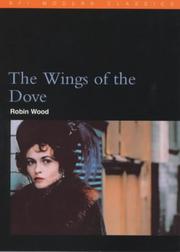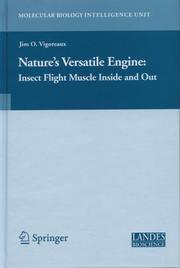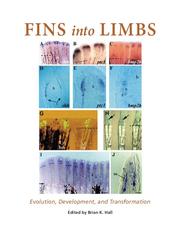| Listing 1 - 10 of 21 | << page >> |
Sort by
|
Book
ISBN: 0128141379 0128141360 9780128141373 9780128141366 Year: 2018 Publisher: London, England : Academic Press,
Abstract | Keywords | Export | Availability | Bookmark
 Loading...
Loading...Choose an application
- Reference Manager
- EndNote
- RefWorks (Direct export to RefWorks)
Airplanes --- Aerospace engineering --- Wings (Anatomy) --- Wings. --- Computer simulation. --- Aerodynamics. --- Aerodynamics --- Aeronautical engineering --- Aeronautics --- Astronautics --- Engineering --- Wings (Airplanes) --- Airframes --- Oscillating wings (Aerodynamics)

ISBN: 0851707343 Year: 1999 Publisher: London British Film Institute
Abstract | Keywords | Export | Availability | Bookmark
 Loading...
Loading...Choose an application
- Reference Manager
- EndNote
- RefWorks (Direct export to RefWorks)
Book
ISBN: 0815651201 9780815651208 9780815609797 9780815609513 0815609795 0815609515 Year: 2010 Publisher: Syracuse, N.Y. Syracuse University Press
Abstract | Keywords | Export | Availability | Bookmark
 Loading...
Loading...Choose an application
- Reference Manager
- EndNote
- RefWorks (Direct export to RefWorks)
Minor league baseball --- Minor leagues (Baseball) --- Minors (Baseball) --- Baseball --- History. --- Rochester Red Wings (Baseball team) --- Red Wings (Baseball team)

ISBN: 1680158996 9781400860777 1400860776 9781680158991 9780691085364 0691085366 0691604215 9780691604213 0691085366 9780691604213 Year: 2014 Publisher: Princeton, NJ
Abstract | Keywords | Export | Availability | Bookmark
 Loading...
Loading...Choose an application
- Reference Manager
- EndNote
- RefWorks (Direct export to RefWorks)
Originator of many of the theories used in modern wing design, Robert T. Jones surveys the aerodynamics of wings from the early theories of lift to modern theoretical developments. This work covers the behavior of wings at both low and high speeds, including the range from very low Reynolds numbers to the determination of minimum drag at supersonic speed. Emphasizing analytical techniques, Wing Theory provides invaluable physical principles and insights for advanced students, professors, and aeronautical engineers, as well as for scientists involved in computational approaches to the subject. This book is based on over forty years of theoretical and practical work performed by the author and other leading researchers in the field of aerodynamics.Originally published in 1990.The Princeton Legacy Library uses the latest print-on-demand technology to again make available previously out-of-print books from the distinguished backlist of Princeton University Press. These editions preserve the original texts of these important books while presenting them in durable paperback and hardcover editions. The goal of the Princeton Legacy Library is to vastly increase access to the rich scholarly heritage found in the thousands of books published by Princeton University Press since its founding in 1905.
Airplanes --- Aerofoils --- Aerodynamics --- Mechanical Engineering --- Engineering & Applied Sciences --- Aeronautics Engineering & Astronautics --- Aerodynamics, Subsonic --- Streamlining --- Subsonic aerodynamics --- Dynamics --- Fluid dynamics --- Gas dynamics --- Pneumatics --- Aeronautics --- Wind tunnels --- Airfoils --- Wings (Airplanes) --- Airframes --- Oscillating wings (Aerodynamics) --- Wings --- Aerodynamics. --- Aerofoils. --- Airplanes -- Wings. --- Aérodynamique --- Aile (anatomie) --- Aérodynamique --- Surface portante --- Wings.
Book
ISBN: 008100964X 0081009690 9780081009697 9780081009642 9780081009642 Year: 2018 Publisher: Cambridge, MA
Abstract | Keywords | Export | Availability | Bookmark
 Loading...
Loading...Choose an application
- Reference Manager
- EndNote
- RefWorks (Direct export to RefWorks)
Airplanes --- Vertically rising aircraft. --- Wings. --- Vertical rising aircraft --- Vertical take-off and landing aircraft --- VTOL aircraft --- Ground-effect machines --- Short take-off and landing aircraft --- Wings (Airplanes) --- Airframes --- Oscillating wings (Aerodynamics)
Book
ISBN: 0199996792 0199996784 9780199996780 0199996776 9780199996773 9780199996773 Year: 2015 Publisher: New York, NY Oxford University Press
Abstract | Keywords | Export | Availability | Bookmark
 Loading...
Loading...Choose an application
- Reference Manager
- EndNote
- RefWorks (Direct export to RefWorks)
From airplanes to birds, the phenomenon of flight has always amazed and mystified humans. Therefore, it is unsurprising that scientists have invested a substantial amount of research into unraveling the secrets of flight evolution. Over the course of the past decade, the science of flight evolution has recently experienced a research renaissance, most of the information has been confined to the ivory tower of academia. In On the Wing, David Alexander delves into the evolution of flight in each of the four animal groups that evolved powered flight: insects, pterosaurs, birds, and bats. Alexander presents and compares each group's evolutionary history, including diversification and partial or complete extinction, especially as related to flight. The evolution of flight in animals is fascinating story riddled with scientific controversy and colorful characters, from the incredible Archaeopteryx to the recently-discovered feathered dinosaur Microraptor. Chapter topics include aerodynamics, comparisons and contrasts among the powered flyers, and the ultimate evolution away from flight. Alexander even examines the surprisingly diverse group of gliding animals, including squirrels, snakes, and ants. Through rigorous yet accessible writing, Alexander offers a comprehensive and engaging account of the evolution of flight, from dinosaurs to modern birds. On the Wing will delight and inform everyone from bird lovers to dinosaur enthusiasts, and offers key insights into the perpetual mystery of flight. -- Provided by publisher. "On the Wing is the first book to take a comprehensive look at the evolution of flight in all four groups of powered flyers: insects, pterosaurs, birds, and bats."--Book jacket.
Animal flight. --- Wings (Anatomy) --- Evolution. --- Animal flight --- Vol animal. --- Aile (anatomie) --- Evolution
Book
ISBN: 0813548616 9780813548616 0813544793 9780813544793 Year: 2009 Publisher: New Brunswick, NJ
Abstract | Keywords | Export | Availability | Bookmark
 Loading...
Loading...Choose an application
- Reference Manager
- EndNote
- RefWorks (Direct export to RefWorks)
What do a bumble bee and a 747 jet have in common? It’s not a trick question. The fact is they have quite a lot in common. They both have wings. They both fly. And they’re both ideally suited to it. They just do it differently. Why Don’t Jumbo Jets Flap Their Wings? offers a fascinating explanation of how nature and human engineers each arrived at powered flight. What emerges is a highly readable account of two very different approaches to solving the same fundamental problems of moving through the air, including lift, thrust, turning, and landing. The book traces the slow and deliberate evolutionary process of animal flight—in birds, bats, and insects—over millions of years and compares it to the directed efforts of human beings to create the aircraft over the course of a single century. Among the many questions the book answers: Why are wings necessary for flight? How do different wings fly differently? When did flight evolve in animals? What vision, knowledge, and technology was needed before humans could learn to fly? Why are animals and aircrafts perfectly suited to the kind of flying they do? David E. Alexander first describes the basic properties of wings before launching into the diverse challenges of flight and the concepts of flight aerodynamics and control to present an integrated view that shows both why birds have historically had little influence on aeronautical engineering and exciting new areas of technology where engineers are successfully borrowing ideas from animals.
Birds --- Airplanes --- Flying-machines --- Animal flight --- Aeronautics --- Aves --- Avian fauna --- Avifauna --- Wild birds --- Amniotes --- Vertebrates --- Ornithology --- Aeroplanes --- Aircraft, Fixed wing --- Fixed wing aircraft --- Planes (Airplanes) --- Aircraft industry --- Flight --- Machinery --- Animal flying --- Animals --- Flight in animals --- Animal locomotion --- Wings (Anatomy)

ISBN: 1280944129 9786610944125 0387312137 1423735153 0387257985 1441938362 Year: 2006 Publisher: Georgetown, Tex. : New York, N.Y. : Landes Bioscience/Eurekah.com ; Springer Science+Business Media,
Abstract | Keywords | Export | Availability | Bookmark
 Loading...
Loading...Choose an application
- Reference Manager
- EndNote
- RefWorks (Direct export to RefWorks)
Methods for Obtaining X-Ray Diffraction Patterns from Drosophila 198 Diffraction Patterns from Drosophila IFM 203 Concluding Remarks 211 Note Added in Proof 211 17. Functional and Ecological Effects of Isoform Variation in Insect Flight Muscle 214 James H. Marden Abstract 214 Introduction 215 Nature's Versatile Engine 215 The Underlying Genetics: An Underinflated Genome and a Hyperinflated Transcriptome and Proteome 216 Functional Effects of Isoform Variation 219 Alternative Splicing and the Generation of Combinatorial Complexity 220 Functional Consequences of Naturally Occurring Isoform Variation 220 18. Muscle Systems Design and Integration 230 Fritz- OlafLehmann Abstract 230 Power Requirements for Flight 230 Power Reduction 233 Power Constraints on Steering Capacity 234 Balancing Power and Control 236 Changes in Muscle Efficiency in Vivo 238 Concluding Remarks 239 From the Inside Out 19. Molecular Assays for Acto-Myosin Interactions 242 John C. Sparrow and Michael A. Geeves Abstract 242 Introduction 242 Myosin Purification and Preparation of the SI Fragment 243 Purification of Flight Muscle Actin 244 Assays of Myosin and Acto-Myosin 244 Major Conclusions Relating to the Enzymatic Properties of Insect Flight Muscle Acto-Myosin 247 Major Questions about Insect Flight Muscle Acto-Myosin Kinetics That Remain 249 20.
Insects --- Wings (Anatomy) --- Flight --- Physiological aspects. --- Muscles --- Physiology. --- Wing (Anatomy) --- Wings --- Forelimb --- Animal flight --- Zoology. --- Animal physiology. --- Biochemistry. --- Cytology. --- Animal genetics. --- Animal Physiology. --- Biochemistry, general. --- Cell Biology. --- Animal Genetics and Genomics. --- Biological and Medical Physics, Biophysics. --- Genetics --- Cell biology --- Cellular biology --- Biology --- Cells --- Cytologists --- Biological chemistry --- Chemical composition of organisms --- Organisms --- Physiological chemistry --- Chemistry --- Medical sciences --- Animal physiology --- Animals --- Anatomy --- Natural history --- Composition --- Physiology --- Cell biology. --- Biophysics. --- Biological physics. --- Biological physics --- Physics

ISBN: 9870226313375 0226313409 1281957054 9786611957056 9780226313405 9781281957054 6611957057 0226313379 9780226313375 0226313360 9780226313368 Year: 2007 Publisher: Chicago University of Chicago Press
Abstract | Keywords | Export | Availability | Bookmark
 Loading...
Loading...Choose an application
- Reference Manager
- EndNote
- RefWorks (Direct export to RefWorks)
Long ago, fish fins evolved into the limbs of land vertebrates and tetrapods. During this transition, some elements of the fin were carried over while new features developed. Lizard limbs, bird wings, and human arms and legs are therefore all evolutionary modifications of the original tetrapod limb. A comprehensive look at the current state of research on fin and limb evolution and development, this volume addresses a wide range of subjects-including growth, structure, maintenance, function, and regeneration. Divided into sections on evolution, development, and transformations, the book begins with a historical introduction to the study of fins and limbs and goes on to consider the evolution of limbs into wings as well as adaptations associated with specialized modes of life, such as digging and burrowing. Fins into Limbs also discusses occasions when evolution appears to have been reversed-in whales, for example, whose front limbs became flippers when they reverted to the water-as well as situations in which limbs are lost, such as in snakes. With contributions from world-renowned researchers, Fins into Limbs will be a font for further investigations in the changing field of evolutionary developmental biology.
Extremities (Anatomy) --- Limbs (Anatomy) --- Anatomy --- Evolution. --- regeneration, function, maintenance, structure, growth, development, evolution, fin, limb, biology, zoology, science, fish, land vertebrates, tetrapods, bird, wings, lizard, modification, adaptation, digging, burrowing, skeletal changes, transition, locomotion, aquatic, flight, nonfiction, digit reduction, ossicles, sesamoids, reptiles, amphibians, osteogenesis, chondrogenesis.
Book
ISBN: 1350213802 9781350213807 Year: 2021 Publisher: [S.l.] BLOOMSBURY
Abstract | Keywords | Export | Availability | Bookmark
 Loading...
Loading...Choose an application
- Reference Manager
- EndNote
- RefWorks (Direct export to RefWorks)
Road films. --- Education --- Philosophy. --- Wenders, Wim. --- Road films --- 373.67.01 --- 791.43.07 --- Wenders, Wim °1945 (°Düsseldorf, Duitsland) --- Alice in the cities (film) --- Don't come knocking (film) --- Palermo Shooting (film) --- Wings of Desire (film) --- Road movies --- Motion pictures --- Philosophy --- Onderwijs ; kunst- architectuuronderwijs ; beschouwingen --- Filmregisseurs, acteurs, filmografen --- Vendâsu, Vimu --- Wenders, Ernst Wilhelm --- Motion picture producers and directors --- Wenders, Wim --- Criticism and interpretation.
| Listing 1 - 10 of 21 | << page >> |
Sort by
|

 Search
Search Feedback
Feedback About UniCat
About UniCat  Help
Help News
News